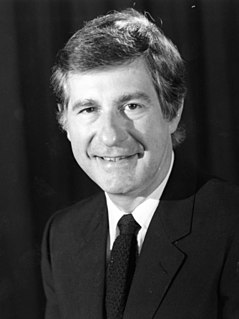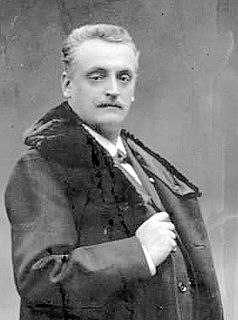Related Research Articles

The oboe is a type of double reed woodwind instrument. Oboes are usually made of wood, but may also be made of synthetic materials, such as plastic, resin or hybrid composites. The most common oboe plays in the treble or soprano range. A soprano oboe measures roughly 65 cm long, with metal keys, a conical bore and a flared bell. Sound is produced by blowing into the reed at a sufficient air pressure, causing it to vibrate with the air column. The distinctive tone is versatile and has been described as "bright". When the word oboe is used alone, it is generally taken to mean the treble instrument rather than other instruments of the family, such as the bass oboe, the cor anglais, or oboe d'amore.

Pierre Benjamin Monteux was a French conductor. After violin and viola studies, and a decade as an orchestral player and occasional conductor, he began to receive regular conducting engagements in 1907. He came to prominence when, for Sergei Diaghilev's Ballets Russes company between 1911 and 1914, he conducted the world premieres of Stravinsky's The Rite of Spring and other prominent works including Petrushka, Ravel's Daphnis et Chloé, and Debussy's Jeux. Thereafter he directed orchestras around the world for more than half a century.

Charles Munch was an Alsacian, German-born French symphonic conductor and violinist. Noted for his mastery of the French orchestral repertoire, he was best known as music director of the Boston Symphony Orchestra.

Concert champêtre, FP 49, is a harpsichord concerto by Francis Poulenc, which also exists in a version for piano solo with very slight changes in the solo part.
René Louis Gabriel Voisin was a French trumpeter.

Marcel François Paul Landowski was a French composer, biographer and arts administrator.
Conrad Arthur Beck was a Swiss composer.

Samuel Dushkin was an American violinist, composer and pedagogue of Polish birth and Jewish origin.
Gabriel Tacchino is one of the premier post-war French classical pianists; he also teaches piano.

Pierre Rolland C.M. was a Canadian oboist, english horn player, radio broadcaster, music critic, music educator, and arts administrator. He is the father of cellist Sophie Rolland and violinist Brigitte Rolland.
The Belgian-born French conductor André Cluytens (1905–67) was a prolific recording artist. His recording career ran from May 1943 to December 1965. Many of Cluytens recordings have since been re-issued.
Melvin Berman was the solo oboist of the Montreal Symphony Orchestra and the Radio-Canada orchestra in Montreal, as well as a member of the Baroque Trio of Montreal.

The conductor Pierre Monteux made a large number of recordings throughout his career. His first recording was as a violist in "Plus blanche que la blanche hermine" from Les Huguenots by Meyerbeer in 1903 for Pathé with the tenor Albert Vaguet. His first recording as a conductor was the first of his five recordings of Stravinsky's The Rite of Spring. His last studio recordings were with the London Symphony Orchestra in works by Ravel at Wembley Town Hall at the end of February 1964. He recorded works by more than fifty composers. However, he disliked recording, saying of studio sessions,
You may give an excellently played, genuinely felt performance of a movement, but because the engineer is not satisfied because there is some rustling at one point, so you do it again and this time something else goes wrong. By the time you get a "perfect" take of the recording the players are bored, the conductor is bored, and the performance is lifeless and boring. … I detest all my own records.
Fernand Gillet was a French and naturalized American oboist who is chiefly remembered for serving as the principal oboist of the Boston Symphony Orchestra from 1925 to 1946. He is also known for his work as a teacher of woodwinds at several prominent institutions in the United States and Canada. His Exercices sur les Gammes, les Intervalles et le Staccato is still a widely used instructional book for woodwind players at universities and conservatories. The International Double Reed Society holds an annual music competition named for him and a well known bassoonist: the Fernand Gillet-Hugo Fox International Competition.

Georges-Vital-Victor Gillet was a French oboist, teacher and composer. In addition to premiering oboe works by prominent French composers of the 19th century, including Émile Paladilhe, Charles-Édouard Lefebvre, Clémence de Grandval, and Camille Saint-Saëns, among others, Gillet was the teacher of Fernand Gillet and Marcel Tabuteau at the Paris Conservatory, helped develop the F. Lorée brand of oboe, and composed a number of études that are still used today.
Georges Laurent was a 20th-century French flautist.
Robert Siohan was a French conductor and composer. Trained as a violist, he also served as choral conductor.

Gustave Vogt was a French oboist and composer.
Philippe Tondre is a French contemporary classical oboist.
László Hadady is a French oboist of Hungarian origin, currently a soloist and professor at the Conservatoire de Paris.
References
- ↑ Tad Margelli, The Paris Conservatoire Concours Oboe Solos: The Gillet Years (1882-1919) Archived 2014-04-21 at the Wayback Machine , IDRS Journal 24, pp. 41-55
- ↑ John Canarina, Pierre Monteux, Maître, Amadeus Press, 2003, p. 46
- 1 2 Speyer, Louis Marius on the Boston Symphony Orchestra Principal Musicians web page
- ↑ D. Kern Holoman, Charles Munch, Oxford University Press, 2012, p. 131
- ↑ "Boston Symphony Orchestra concert program, 94th season (1974-1975)".
- ↑ Harry Halbreich, Arthur Honegger: Un musicien dans la cité des hommes, translated by Roger Hichols, Amadeus Press, Portland, 1999, ISBN 1574670417, pp.194-200